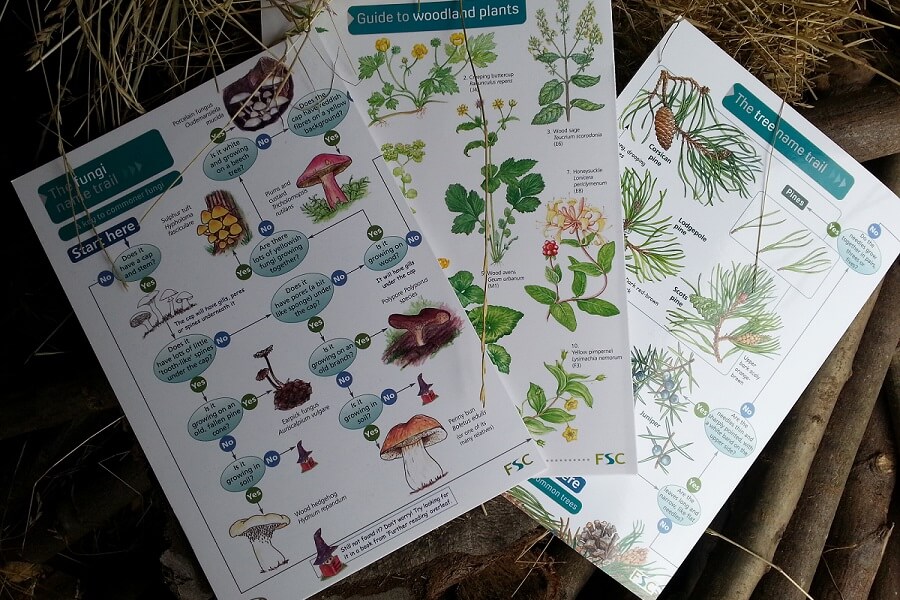Natural history is an integral part of Bushcraft. In fact without an appreciation and understanding of flora and fauna, would really be missing out in a big way. Bushcraft covers a wide range of topics, I like to think that these fall broadly into the three areas of teaching; outdoor living skills, natural history and woodland crafts. These areas all overlap!
To be successful in living outdoors you need to understand at least some natural history, for instance which plants provide good tinder. Studying trees and plants help you appreciate the environment you are in and perhaps understand a little of it’s history. Similarly, when carving a spoon or fashioning a pot knowing which tree the wood came from or the properties of the bark you are using is fundamental to the object you create.
I’m fortunate to have a pretty good selection of books and field guides from which to reference and study. So what would I recommend you put in your pack when out for a walk?
I’d recommend a fold-out field studies guide from the Field Studies Council. They produce a wonderful selection; fungi, woodland plants, trees, British mammal tracks and signs and many, many more.
The field studies fold-out guides are beautifully put together with flow charts, clear pictures and reference information to help you identify what you are looking at. They are practical too, arguably more so that a reference book, because they laminated, so they are weather proof and robust, just what you need when out on a county walk or ramble.
